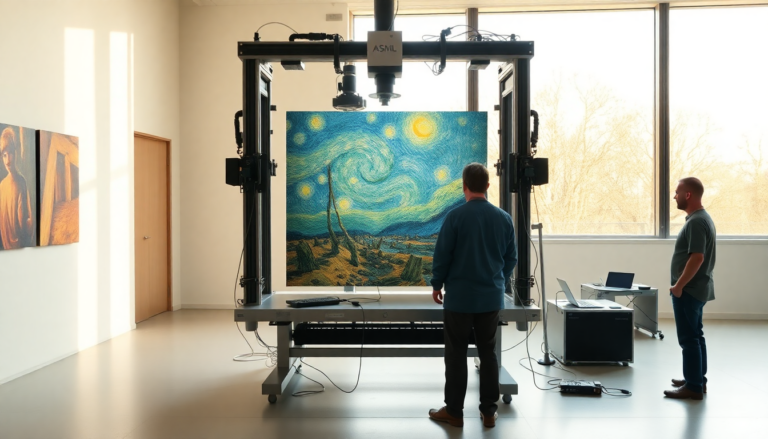Argomenti trattati
Imagine a world where the masterpieces of Vincent van Gogh are digitized to an astonishing degree, capturing every brushstroke in stunning detail. Sounds like a fantasy, right? Well, welcome to the reality of the Impasto Project, where ASML, a titan in chipmaking, shakes hands with the Van Gogh Museum to create a 3D scanner capable of generating about 100GB of data per painting. Talk about data overload! But hold on, because this isn’t just about tech marvels; it’s about pushing the boundaries of what we know about art preservation.
The absurdity of merging art and tech
In 2017, the curators of the Van Gogh Museum had a wild idea: why not create a digital version of their prized collections, akin to ‘Google Maps for paintings’? They reached out to ASML, and, lo and behold, the tech giant jumped on board. It’s almost comical how two seemingly unrelated fields collided in such a spectacular fashion. After all, who would’ve thought that the same company that makes intricate chip machines could also be the key to preserving artistic heritage? It’s like a tech nerd’s wet dream, and the art world is here for it.
What does the Impasto Project entail?
The Impasto Project is not merely a flashy gimmick; it’s a serious undertaking. The hardware resembles a shoebox but packs a punch, utilizing a rail-guided system to meticulously scan every inch of a canvas. Each painting is dissected into dozens of segments, capturing photos from various angles. It’s like taking a selfie of every little detail! And with each 3D scan yielding around 100GB of data, one has to wonder: do we really need that much detail? But then again, who wouldn’t want to see every ridge of paint on a Van Gogh? It’s practically a treasure hunt of textures.
Accuracy that’s borderline obsessive
ASML’s measuring equipment is precise to the nanometer, which is mind-boggling when you think about it. They’ve scaled this technology to 100,000 times larger for the art scans. It’s as if they’ve taken the term ‘measure twice, cut once’ to a whole new level—only they’re not cutting anything, just obsessing over paint thickness. The partnership has evolved since its inception, and they’re committed to this until at least 2028. Who knows what kind of bizarre tech marvels they’ll dream up next?
Curators’ new best friends
But the Impasto Project isn’t just about fancy scans. This tech can also automate the inspection of paintings before and after they’re loaned to other institutions. With this new tool, curators can monitor how temperature, humidity, and even handling affect the artworks. It’s like giving these paintings their very own health check-up! And let’s be real, isn’t it a bit ridiculous that we need advanced technology to look after art? But in a world where art faces more threats than ever, perhaps it’s a necessary evil.
The price of preservation
ASML seems to shrug off the costs associated with this project, which they estimate at a casual ‘few million a year.’ With a mere 10 to 15 staff members dedicated to this endeavor, one has to wonder about the priorities of a company that’s seemingly tossing money at art. Sure, it’s great that ASML is investing in local projects, but is this really the best way to spend millions? Let’s just say that the art world is grateful, but it also raises an eyebrow.
What’s next for the Impasto Project?
As the collaboration progresses, visitors to the Van Gogh Museum can now check out the new science center showcasing the 3D scanning equipment. This is where tech enthusiasts and art lovers can geek out together! And while other museums around the world are eyeing this technology, the Van Gogh Museum retains control over the project’s intellectual property. Will they commercialize it? Who knows! But one thing’s for sure: the art world is about to get a whole lot more complicated.
So, as we marvel at the intersection of art and technology, let’s not forget the absurdity of it all. Here we are, living in a time where preserving a painting requires more tech than what went into landing on the moon. Isn’t it delightful? But who needs to worry about such trivialities when we can just download Van Gogh’s masterpieces in 3D?

